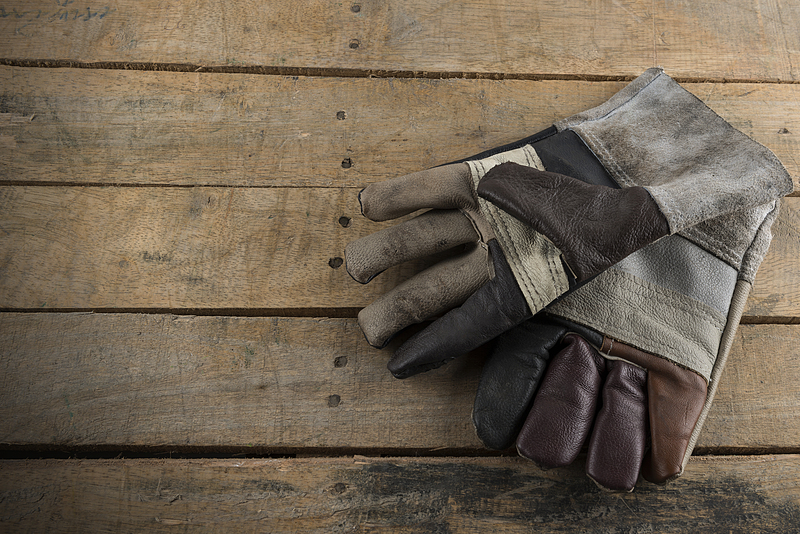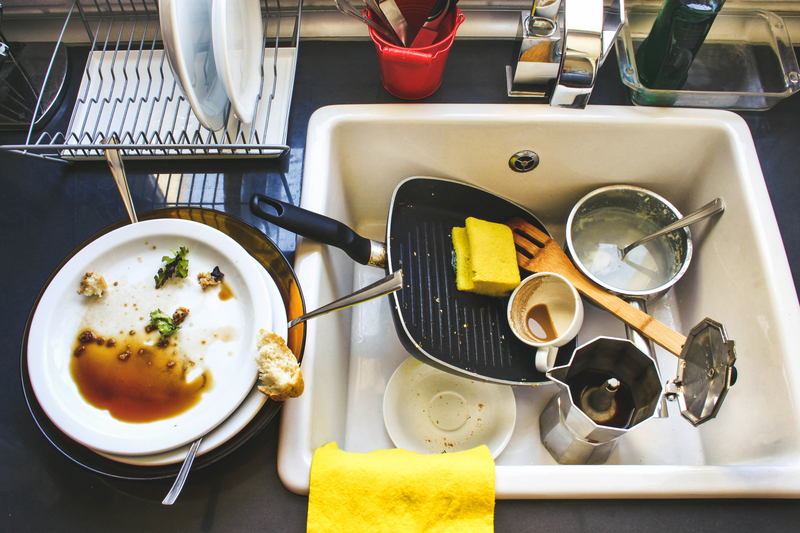Practical Packing Order for a Seamless House Move
Moving house is not just about shifting your belongings from one place to another; it's about transitioning your life smoothly and efficiently. A well-planned, practical packing order is crucial for ensuring a straightforward, stress-free move. This comprehensive guide will teach you the best packing strategy for moving, helping you avoid last-minute headaches and forgotten items. Whether you are moving across town or to a new city, these expert tips will ensure your moving process is as seamless as possible.
Why Packing Order Matters in a House Move
Before you start putting your entire home into boxes, it's essential to understand why the packing sequence is so important. Following the most efficient packing order can:
- Reduce stress and chaos during your house move.
- Help you track your belongings and avoid losing important items.
- Make unpacking in your new home easier and more organized.
- Protect your belongings through proper packing.
- Save time and money by keeping your move efficient.
Let's dive into the practical packing order recommended by moving experts for a seamless house move.

Pre-Packing Preparation: The Right Start
Before you even seal your first box, there are some vital steps to take. Proper preparation ensures that your house move is as smooth as possible.
1. Declutter Your Home
Start by sorting through your belongings. Decide what you want to keep, donate, sell, or discard. Less clutter means fewer things to pack and move, reducing both your workload and moving costs.
- Clothes: Donate items you haven't worn in the last year.
- Books: Keep only those that are meaningful or necessary.
- Kitchenware: Discard or donate gadgets and utensils you no longer use.
2. Gather Packing Supplies
- Sturdy moving boxes in various sizes
- Packing tape and dispensers
- Bubble wrap, packing paper, or old newspapers
- Permanent markers for labeling
- Labels or color-coded stickers
- Stretch wrap and furniture pads
- Scissors and box cutters
Tip: Buy extra supplies to avoid running out in the midst of packing.
3. Make an Inventory List
Create a moving inventory spreadsheet or checklist. Tracking your belongings gives you peace of mind and helps streamline unpacking at your new home.
A Room-by-Room Practical Packing Order
Following a strategic order when packing your home greatly increases efficiency and minimizes disruption to your daily life. Here's a step-by-step guide to packing each area of your home optimally.
1. Start With Storage Areas
Begin by packing the least-used areas of your home--places like the attic, basement, garage, closets, and sheds. These spaces often contain seasonal, sentimental, or infrequently used items.
- Holiday decorations
- Sporting goods
- Campsite or gardening supplies
- Archived documents
Pack these items first, as you won't need them until after the move.
2. Decorative and Non-Essential Items
Next, turn to artwork, photo frames, decorative figurines, books, and other display pieces. These add personality to your home but aren't needed daily.
- Wall art and paintings
- Decorative vases and collectibles
- Books, magazines, DVDs/Blu-rays
Pro Tip: Wrap fragile decor in bubble wrap, mark boxes as 'fragile,' and keep these boxes separate for careful handling.
3. Spare or Guest Rooms
If you have a guest bedroom or extra rooms not used regularly, empty them first. Packing up these spaces early will not affect your daily routine.
- Spare linens and bedding
- Unused furniture
- Extra blankets and pillows
4. Out-of-Season Clothing and Shoes
Sort your wardrobe and begin with garments, coats, and shoes you won't need until after you've moved. Make use of wardrobe boxes for easy transport of hanging items.
5. Kitchen -- Non-Essentials First
The kitchen can be one of the most challenging rooms to pack. Begin with items you rarely use:
- Specialty appliances (waffle maker, slow cooker, etc.)
- Serving platters and fancy china
- Extra pots and pans
- Backup pantry items and canned goods
Leave out only the basics you'll need until moving day--coffee maker, daily dishes, and utensils.
6. Living Room and Main Bedrooms
Pack up books, DVDs, board games, and other non-daily items. Save essential electronics and furniture for last.
- Pack up spare lamps and decorative pillows first.
7. Bathrooms
Pack surplus toiletries, linen sets, and cleaning supplies, but keep daily-use items accessible until the last day. Dispose of nearly empty or expired bottles to lighten your load.
- Reserve one box for each family member's essentials, including toothbrush, toothpaste, a towel, and soap.
8. Home Office or Study
Back up important digital files, pack up books, supplies, and paperwork you won't need immediately. Place electronics and critical files in well-labeled, easy-to-find boxes for quick access at your new address.
9. Daily-Use Items -- Pack Last
Your everyday essentials should be the last to go into boxes. Pack an essentials bag or box for each family member with:
- Medications and basic first-aid supplies
- Phone chargers and devices
- Toiletries and a change of clothes
- Valuables and critical documents
- Snacks, water, and basic utensils for moving day
This "open first" box will be a lifesaver both on moving day and your first night in the new home.
Expert Packing Tips to Ensure a Smooth Move
- Label each box clearly: Include the room and a brief list of contents. Use colored stickers for even faster identification.
- Pack boxes by room: This makes unpacking in your new house much easier and more organized.
- Don't overload boxes. Use smaller boxes for heavy items like books and dishes.
- Use towels, linens, and clothes as padding for breakables -- this saves space and protects fragile items.
- Disassemble furniture safely: Take photos of assembly steps, and place screws and small parts in labeled plastic bags taped to the furniture pieces.
Packing Order for Long-Distance vs. Local Moves
The practical packing order can differ slightly according to your move's distance and transportation method.
For Local Moves
- You can often carry essentials in your own car and return for more loads as needed.
- A more flexible packing order is possible, but sticking to the traditional sequence is advisable for efficiency.
For Long-Distance Moves
- You typically have just one moving truck trip.
- Make sure all necessary items are accessible and that your open-first box travels with you in person, not with the movers.
Items to Avoid Packing in the Moving Truck
Some belongings should not go into the moving van for safety or legal reasons. These include:
- Perishable food and plants
- Hazardous materials (paint, propane, fireworks, chemicals)
- Valuables (cash, jewelry, heirlooms)
- Important documents (passports, birth certificates)
- Personal electronics and sentimental items
Tip: Always check with your moving company for their specific restrictions.
How to Stay Organized During the House Move
Organization is key to a seamless house move. Here's how to keep things under control:
- Use a Packing Timeline: Assign each room and packing stage a specific date on your calendar.
- Create a moving binder: Maintain all checklists, receipts, and contracts in one place.
- Photograph valuable items and collect serial numbers for insurance purposes.
- Designate a "no-pack zone" where you'll store items that need to stay with you until the last minute.

Frequently Asked Questions About Packing Order for House Moves
How far ahead should I begin packing for my move?
For a seamless move, begin packing non-essential and storage area items 4-6 weeks before moving day. Intensify the process in the final 2-3 weeks, saving essentials for the last few days.
What's the best way to pack fragile items?
Wrap each item individually in bubble wrap or packing paper, line the box with cushioning materials, and fill any gaps. Mark boxes as "Fragile" on multiple sides and avoid overstacking them in the moving truck.
How can I make unpacking easier after my move?
Pack by room, label boxes precisely, and keep an essentials box for each member. Unpack essentials and high-use areas (kitchen, bathroom, kids' rooms) first when you arrive at your new home.
Final Thoughts: Ensure a Stress-Free Move by Packing Smart
The packing order for a seamless house move is as much about planning as it is about the physical work itself. By prioritizing rooms and items smartly, you'll reduce stress, save time, and make settling into your new home a much pleasanter experience. From prepping and decluttering to the room-by-room packing strategy, following this guide will ensure you're organized, efficient, and calm through every step of your move.
Remember: start early, stay organized, and stick to a logical packing order. A seamless house move is well within your reach!
Ready for your upcoming move? Use this packing guide as your blueprint for a smooth transition to your new home. Happy moving!



